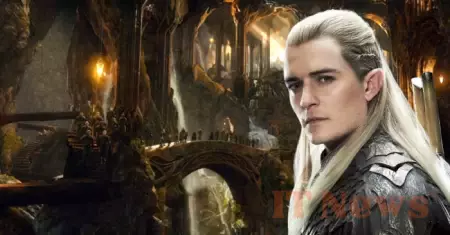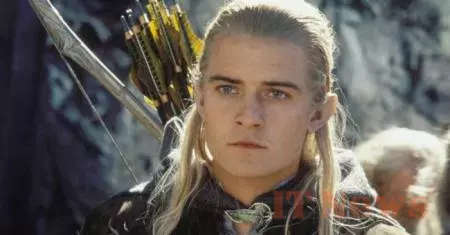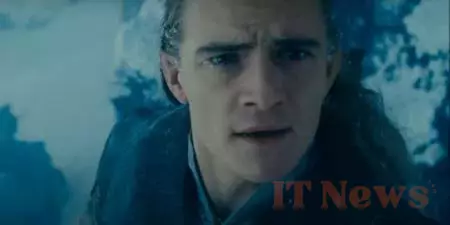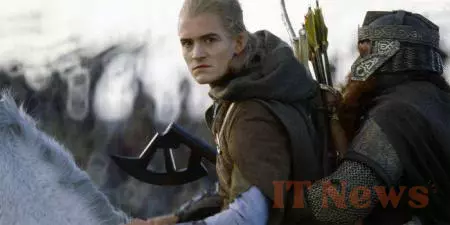Pop culture's most stylish elf is under the scanner. Made famous by Peter Jackson and Orlando Bloom's performance (Pirates of the Caribbean), Legolas is the indispensable scout and archer of The Fellowship of the Ring. A character everyone wants on their team to go to war. But his status as an Elf gives him many other qualities, such as keen eyesight, extraordinary endurance, and a very high resistance to fatigue. It is in J.R.R. Tolkien's books that we find more anecdotes about Legolas than in the films, the source material being much more substantial.
#4 He is very old
The Elves are fascinating and very ancient creatures who were not created in the Second Age like Men or Dwarves, nor even in the First, but during the Years of the Trees by Eru Illuvatar. They therefore have exceptional longevity (in reality, their soul is immortal, only the fleshly envelope can die). Thus, despite his apparent youthfulness, Legolas is very old during the events of the quest for the One Ring. While neither the films nor the books mention his precise age, the British novelist dwells on the benefits his Elven nature gives him.
#3 He walks on snow without leaving any traces
We've said it. Legolas's Elven nature allows him to benefit from many powers. Among them, his extreme lightness. While he can run very (very) long distances, he also leaves no trace in his wake. The best example is in Chapter 3 of The Fellowship of the Ring: The Ring Goes South. As the band sinks into the snow following the storm caused by Saruman, Legolas seems to almost "float" above them. "Legolas walked lightly on the snow, like an elf, leaving no trace." Once again, we must turn to the elves' relationship with the world, Arda, to explain this phenomenon. Elves, according to Tolkien, do have a physical body, but this is deeply connected to their spirit, which transcends it (hence the idea that their spirit cannot die). A matter that transcends human physical laws. It is in his letters that Tolkien advances these metaphysical arguments. This entire scene symbolizes the opposition between mortal peoples (Men, Dwarves), and immortal peoples. In the books, this sequence is omitted, although Peter Jackson highlights his character's unparalleled agility.
#2 He sings a lot
Singing is fundamental to Elven culture. It finds its source in the premises of the creation of the world. Era Illuvatar created Arda in music, called the music of the Ainur, and the Elves, being his first children, are deeply influenced by song and poetry. Tolkien's stories tell that the Elves sing in the same way they speak. A natural way to express their emotions, to pay homage to their creator and to preserve memory through the ages, whether through mourning, tales of adventure, wonder or the history of their people. Legolas thus continues the tradition when he travels with his companions across Middle-earth. He begins a dirge after Gandalf's fall in Moria, as well as in Lothlorien, the realm of Galadriel, when the Fellowship stops there. After the terrible Battle of Helm's Deep in The Two Towers, this time he sings a poem about the wind in the trees (in reference to the Ents) and a tribute to the fallen Men. The films omitted most of the lyrical passages, preferring to portray the Elf more as a skilled archer and peerless fighter. A scene in the extended version of The Fellowship of the Ring does, however, refer to the songs of the Elves, through "Lamentations for Gandalf". While the group is in Lorien, Legolas explains that the Elves have gathered to sing in homage to the Grey Wizard. Songs come from the trees, attracting the Hobbits' curiosity.
#1 He travels with Gimli after The Return of the King
The Elves and the Dwarves have hated each other for centuries. Peter Jackson materializes this distrust between the two peoples through their quarrel at the Rivendell Council, then through the barbs thrown by Gimli at Legolas throughout the film (a comic device to attract a general audience). The beginning of a great friendship tinged with rivalry then arises between the two warriors, which will continue to grow as the adventure progresses (the famous challenge of the enemies killed at Helm's Deep). But what the films do not evoke is the continuation of their adventure after the fall of Sauron. Legolas shows his friend the plains of Ithilien, while the latter takes him to the Glittering Caverns (Aglarond). A journey between friends where each introduces the other to their cultural heritage. But the greatest proof of friendship crystallizes when Legolas decides to take Gimli with him to go to the Undying Lands, to Valinor. No Dwarf has ever had such a privilege. A passage that those who have read the appendices of The Return of the King will know.
Want to continue reading? Discover these other secrets about Legolas.








0 Comments